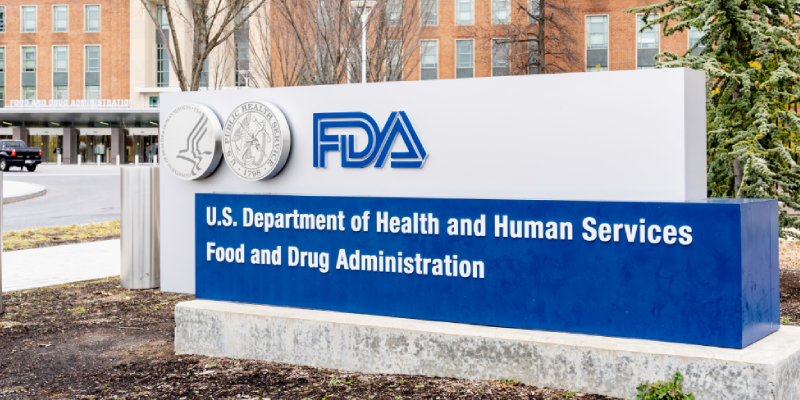
A study reported in Diabetes Care of a delayed-release from of metformin shows that the glucose-lowering effect of metformin occurs in the gut rather than in the bloodstream. The finding means that this form of the drug used to treat type 2 diabetes could be tolerated by the 40% of type 2 diabetes patients who cannot use the current formulation.
In an article in Medical News Today, John Buse, MD, PhD, professor of medicine and lead author of the study, said, “These studies provide evidence that delivering Metformin DR to the lower bowel significantly reduces the amount of metformin in the blood, while maintaining its glucose-lowering effect.”
Because metformin collects in the blood of patients with poor kidney function, in patients with impaired kidneys, metformin use can increase the risk of lactic acidosis, where lactic acid builds up in the bloodstream faster than it can be removed.
There are approximately 4 million people in the United States with type 2 diabetes who, due to impaired kidneys, cannot take metformin. Results of the phase 1trial demonstrated that participants who took the DR version had half the amount of metformin in their blood compared with those who took the IR or XR versions.
In the phase 2 trial, the effects of various doses of Metformin DR were tested compared with placebo or Metformin XR in 240 type 2 diabetes patients at various clinics. Results showed that Metformin DR was approximately 40% more potent than Metformin XR. The DR version also demonstrated a statistically significant and sustained reduction in fasting plasma glucose over 12 weeks compared with placebo.
The treatment was generally well tolerated and side effects were similar to those known to occur with current forms of metformin.
Amgen Files NDA for Etelcalcetide
Amgen has submitted a New Drug Application (NDA) with the US FDA for etelcalcetide (formerly AMG 416) for the treatment of secondary hyperparathyroidism (SHPT) in patients with chronic kidney disease (CKD) on hemodialysis. If approved, etelcalcetide will be the first calcimimetic agent that can be administered intravenously at the end of a dialysis session.
In a press release from Amgen, Sean E. Harper, MD, executive vice president of research and development, said, “Secondary hyperparathyroidism is a serious, progressive disease that can lead to significant clinical consequences and is also associated with a high pill burden for patients. We look forward to working with regulatory authorities during the review process to bring this important treatment to market, helping to fill an unmet need for the many patients impacted by this disease.”
According to the release, etelcalcetide, currently in development for the treatment of SHPT in patients with CKD on hemodialysis, is a novel calcimimetic agent that suppresses the secretion of parathyroid hormone. The agent is administered intravenously three times a week at the end of each dialysis session. It binds to and activates the calcium-sensing receptor on the parathyroid gland, causing decreases in parathyroid hormone.
The NDA submission includes data from three phase 3 studies. All three studies met the primary end points, including two pooled placebo-controlled trials in more than 1000 patients, and a head-to-head study evaluating etelcalcetide compared with cinacalcet, the press release said.
Variation in Transplantation Referral Rates among Georgia Dialysis Centers
In a study conducted by Robert E. Patzer, PhD, MPH, at the Emory University School of Medicine in Atlanta, and colleagues, the researchers found that between 2005 and 2011, only about one in four patients in Georgia with end-stage real disease (ESRD) were referred for kidney transplant evaluation within 1 year of dialysis initiation. There was substantial variability in referral among dialysis facilities. The researchers reported results of the study in JAMA, according to an article in Medical News Today.
The study was designed to examine variations in dialysis facility-level referral for evaluation for kidney transplantation as well as factors associated with referral among patients initiating dialysis in Georgia. Georgia has the lowest rates of kidney transplantation in the United States. The researchers utilized data from the United States Renal Data System (USRDS) for 15,279 patients 18 to 69 years of age with ESRD from 308 dialysis facilities in Georgia from January 2005 to September 2011. Follow-up continued through September 2012. The USRDS data was linked to kidney transplant referral data collected form adult transplant centers in Georgia during the same time period.
The median within-facility percentage of patients referred within 1 year of initiating dialysis at the 308 centers was 24%. Five percent (n=15) of the facilities referred zero patients within 1 year of dialysis initiation; the maximum referral rate in a year was 75%. Centers in the lowest tertile of referral (<19%) were more likely to treat patients who lived in a high poverty neighborhood, had a higher patient to social worker ratio, and were more likely to be nonprofit than facilities in the highest tertile of referral (>31%).
Noting that factors associated with lower referral rates (white race, older age, and nonprofit status) were not necessarily the same as those associated with lower waitlisting, the researchers said, “Results of this study suggest that referral for transplantation among Georgia dialysis facilities is not uniform and that national surveillance data measuring waitlisting and transplantation, but not referral, may be inadequate to assess and intervene on disparities in access to kidney transplantation.”
Induced Hypothermia in Deceased Donors Reduces Risk of Delayed Graft Function
A study reported in the New England Journal of Medicine, found that inducing a mild state of hypothermia in deceased organ donors reduced the likelihood of delayed graft function in patients receiving kidney transplants by 38%. Claus Niemann, MD, lead author and professor of anesthesia and surgery at the University of California, San Francisco, said, “This is a free intervention that can be done at any hospital in the world, and tens of thousands of patients worldwide can benefit from it.” The study was cited in an article in Medical News Today.
Currently, approximately 40% of patients receiving a kidney transplant experience delayed graft function, which is associated with increased healthcare costs and reduced long-term organ function.
The researchers conducted a randomized controlled trial involving 370 organ donors. Of the total cohort, 190 were assigned to a group kept at normal body temperatures and 180 to a group kept at 2°C lower than the body temperature group. A total of 575 patients received kidney transplants from the donors in the study: 287 from the body temperature group and 285 from the hypothermia group. Delayed graft function occurred in 39% (n=112) of recipients of kidneys from the body temperature group of donors, compared with 28% (n=79) of recipients of kidneys from the hypothermia group of donors.
Because the intervention was so successful, an independent data and safety monitoring board recommended that the trial end early.
“From these findings, potentially more organs could be available for transplantation since we can push the limits with these ‘marginal donors.’ This is critical because the number of available deceased organ donors has been stagnant, but the demand has dramatically increased. In the united States alone, about 101,000 patients wait for kidney transplantation,” Dr. Niemann said.
Intestinal Bacteria Byproduct May Affect Heart Health in CKD Patients
Atherosclerosis is common in patients with chronic kidney disease (CKD) and can lead to heart disease, the leading cause of death among patients with CKD. Jason Stubbs, MD, and colleagues recently conducted research that found that an organic byproduct generated by intestinal bacteria may be responsible for the formation of cholesterol plaques in the arteries of patients with decreased kidney function. The study, cited in an article in Medical News Today, was reported in the Journal of the American Society of Nephrology.
The researchers said that targeting the byproduct may be an effective strategy for protecting the heart health of patients with CKD.
Certain intestinal bacteria generate trimethylamine-N-oxide (TMAO) as they metabolize the dietary nutrients choline and L-carnitine. Giving TMAO to rodents promotes atherosclerosis and humans with higher concentrations of TMAO in the bloodstream are at increased risk of developing heart disease. The kidneys likely play an important role in maintaining low blood levels of TMAO because it is cleared almost exclusively by urinary excretion.
The researchers in the current study found that blood levels of TMAO increased as kidney function declined. In a subset of six patients who underwent kidney transplantation, the procedure led to a significant drop in TMAO levels, and in a separate group of 220 patients with CKD, there was a link between high levels of TMAO in the bloodstream and an increased risk of atherosclerosis and death over a period of 4 years.
Dr. Stubbs said, “Based on evidence that TMAO production is dependent on the metabolism of specific dietary constituents by intestinal bacteria, therapies targeting the generation of TMAO precursors by intestinal bacteria may represent a novel strategy for reducing cardiovascular disease and mortality in disease in patients with CKD.”







 © 2025 Mashup Media, LLC, a Formedics Property. All Rights Reserved.
© 2025 Mashup Media, LLC, a Formedics Property. All Rights Reserved.